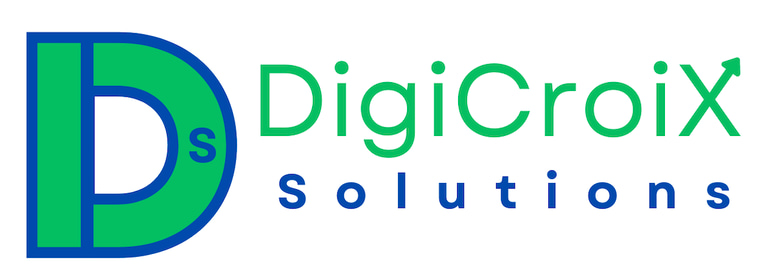Ads for Healthcare Services That Convert Quickly
Explore ads for healthcare services that have delivered fast patient acquisition in competitive markets. See proven ad formats and messaging. Book a 1‑hour call to test tailored ads for your practice.
Vishwa Raval
9/28/20258 min read


Introduction to Healthcare Advertising
Healthcare advertising plays a critical role in the modern medical landscape, where competition is fierce and the need for effective communication has never been more pronounced. As patients increasingly turn to online resources and social media platforms for healthcare information, healthcare providers must adopt strategic advertising approaches to ensure they are prominently visible. This visibility is essential not only for brand awareness but also for fostering trust within the community and encouraging patient engagement.
The healthcare sector has become highly competitive, with numerous providers vying for the attention of potential patients. In this environment, crafting compelling advertisements is vital. Successful ads must not only capture the audience's attention but also convey critical information about services in a manner that resonates with their needs and concerns. Utilizing empathetic communication helps to ensure that advertisements reflect an understanding of the patients' experiences, thereby increasing the likelihood of conversions.
Furthermore, the advent of digital marketing has transformed traditional healthcare advertising methods. Now, healthcare providers have the ability to target specific demographics and utilize data analytics to refine their messaging. This targeted approach facilitates efficient resource allocation, enabling healthcare marketers to optimize their campaigns for better performance and higher patient acquisition rates.
Understanding the significance of healthcare advertising sets the stage for exploring specific strategies that can enhance ad effectiveness. By analyzing successful campaigns and recognizing the nuances of patient behavior, healthcare providers can develop advertisements that not only attract attention but also drive fast patient acquisition. As we delve deeper into proven ad strategies, it is essential to appreciate the foundational role that thoughtful healthcare advertising plays in bridging the gap between providers and prospective patients.
Understanding Your Target Audience
Understanding the target audience is a fundamental aspect of developing effective advertisements for healthcare services. In this sector, patient demographics such as age, gender, and location significantly influence healthcare needs. For example, older adults may prioritize services like cardiology or geriatrics, while younger populations may focus on preventive care or mental health support. Similarly, gender can play a role in shaping healthcare preferences and needs, with women often seeking reproductive and maternal services, while men may be more inclined towards preventive screenings for certain chronic conditions.
Location also factors heavily into patient preferences, as healthcare services can vary substantially based on regional availability and cultural attitudes toward health. Urban populations may have different healthcare accessibility and privacy concerns than those living in rural areas. Therefore, comprehensively understanding these demographic factors is crucial for crafting messages that resonate with specific audiences.
Conducting thorough patient research is an essential strategy in this context. Surveys, focus groups, and interviews can provide valuable insights into patients' needs and expectations. Such initiatives can help identify common pain points—issues that may discourage potential patients from seeking care. Whether it be long wait times, concerns over costs, or the complexity of insurance claims, addressing these pain points in advertisements can foster a sense of understanding and reliability toward the healthcare provider.
Moreover, using online analytics tools to track engagement and feedback on existing campaigns allows healthcare marketers to refine their strategies. By adapting the advertising approach based on patient behavior and preferences, healthcare services can ensure their messages align with patient expectations. A well-informed approach to understanding the target audience not only enhances the effectiveness of healthcare advertising but also supports faster patient acquisition.
Proven Ad Formats for Healthcare Services
In the competitive realm of healthcare services, it is essential to employ effective advertising strategies that facilitate quick patient acquisition. Various ad formats have emerged as particularly effective, among which Google Ads, social media advertisements, and video marketing stand out. Each of these formats offers unique advantages for healthcare providers looking to attract new patients.
Google Ads, for instance, leverage search engine optimization to display targeted advertisements when potential patients search for specific healthcare services. By utilizing keywords relevant to their offerings, healthcare institutions can reach individuals actively seeking assistance. Case studies reveal that physicians who utilized Google Ads experienced a substantial increase in patient inquiries and appointments within a short time frame. This format is especially beneficial for urgent care services where prompt patient acquisition is crucial.
Social media ads offer another dynamic avenue for healthcare marketers. Platforms such as Facebook, Instagram, and LinkedIn allow for precise targeting based on demographics, interests, and online behavior. This format not only promotes services but also fosters community engagement and trust. For instance, a campaign by a local dental practice on Facebook that showcased patient testimonials and educational content led to a marked increase in appointment bookings within weeks. The visual nature of social media makes it an ideal platform for sharing compelling stories and building relationships with potential patients.
Furthermore, video marketing has gained traction as an impactful format for conveying complex healthcare information in an accessible manner. Videos can humanize healthcare providers and make them more relatable. A notable case involved a hospital that implemented a series of educational videos on health topics, resulting in increased website traffic and patient inquiries. The ability to demonstrate procedures and answer common questions through this medium has proven effective in demystifying healthcare services.
In considering these varied ad formats, healthcare organizations can strategically select the ones that align best with their objectives and patient demographics. By effectively leveraging Google Ads, social media, and video marketing, providers can enhance their outreach efforts significantly, optimizing patient acquisition rates.
Crafting Compelling Messaging
In the competitive landscape of healthcare advertising, the importance of crafting compelling messaging cannot be overstated. Effective ads must articulate concise and persuasive narratives that resonate with potential patients, leading to enhanced engagement and, ultimately, conversion. A fundamental strategy in developing these messages is to incorporate urgency, empathy, and educational value.
Urgency can be a significant motivator for prospective patients. Highlighting limited-time offers or emphasizing the immediacy of healthcare needs encourages individuals to act without delay. For example, providers often mention seasonal flu shots or screening tests that have a specific timeframe, instilling a sense of promptness. This approach motivates patients to seek services faster than they might have otherwise.
Empathy also plays a crucial role in messaging. Understanding and addressing patient concerns can create a connection that fosters trust. Using language that speaks to the emotional states of patients—acknowledging their fears, hopes, and desires—can enhance the effectiveness of an ad. For instance, a healthcare provider might frame an advertisement around the reassurance of receiving timely care post-diagnosis, aiming to alleviate anxiety while encouraging treatment.
Furthermore, education is a critical component of successful healthcare advertising. Providing clear and concise information regarding procedures, benefits, and possible outcomes empowers patients to make informed decisions. Ads that delineate what to expect during visits, or those that unpack the importance of preventive care, not only serve to educate but also build credibility for the healthcare provider.
Finally, incorporating clear calls to action (CTAs) is vital to drive patient acquisition. Phrases like "Book your appointment today" or "Contact us to learn more" guide potential patients towards the next step. When these elements—urgency, empathy, education, and strong CTAs—are interwoven into the messaging, healthcare ads can effectively convert audience interest into appointments and ultimately foster long-term patient relationships.
Utilizing Digital Platforms for Maximum Reach
In the contemporary landscape of healthcare marketing, leveraging digital platforms has become paramount for driving patient acquisition. Each platform offers unique advantages, allowing healthcare services to tailor their advertising strategies to specific target audiences effectively. Among the key players in this digital space are Facebook, Instagram, and Google Ads, each presenting distinct benefits that can enhance patient outreach.
Facebook, with its extensive user base, is an invaluable tool for healthcare providers. The platform allows for refined demographic targeting, enabling advertisers to reach specific age groups, geographical locations, and interests. Healthcare institutions can run ads that provide educational content or promote services, fostering trust and awareness among potential patients. Utilizing Facebook Insights can further aid in understanding audience interactions, ensuring that the ads resonate with the intended demographic.
Instagram stands out as a visually-driven platform, making it particularly effective for healthcare services looking to humanize their brand. Engaging images and videos showcasing patient stories, staff introductions, or service highlights can capture the attention of users quickly. With the capability to use hashtags effectively, healthcare marketers can expand their reach beyond immediate followers, positioning their services in front of users searching for relevant healthcare solutions.
Furthermore, Google Ads offers a unique advantage through its search-based targeting. When patients actively search for specific healthcare services, utilizing Google Ads ensures that your facility appears prominently in search results, capturing potential patients at a critical decision-making moment. By employing keyword strategies effectively, healthcare providers can maximize their ad placements and visibility to individuals seeking immediate medical assistance.
Optimizing ad performance also involves strategic budget allocation across these platforms. Analyzing previous campaign performances helps in understanding which platform yields the highest return on investment. Regularly reviewing metrics and making data-driven adjustments will ultimately enhance the effectiveness of healthcare advertising campaigns across digital platforms.
Testing and Analyzing Ad Performance
In the highly competitive landscape of healthcare advertising, testing and analyzing ad performance is critical for ensuring effective patient acquisition. A systematic approach to evaluating the efficacy of ads can uncover valuable insights that drive continuous improvement. By leveraging various tools and methodologies, healthcare organizations can track essential performance metrics, such as click-through rates (CTR), conversion rates, and overall patient engagement.
One effective method for testing ad performance is the use of A/B testing, which involves creating two variations of an ad and measuring their effectiveness. This technique allows healthcare marketers to determine which elements resonate more with the target audience. For example, changing the ad's call-to-action or visual components can yield different responses, providing data on what aspects attract potential patients most. By rigorously analyzing the results from these tests, one can refine ad strategies and optimize for higher conversion rates.
Additionally, utilizing analytics tools, such as Google Analytics or Facebook Ads Manager, offers deeper insights into user behavior. These platforms allow healthcare providers to monitor specific key performance indicators (KPIs), including patient acquisition costs and lifetime value metrics. Analyzing such data helps in understanding the overall return on investment (ROI) of advertising campaigns, leading to more informed decision-making. By reviewing trends over time, marketers can gain a clearer picture of which strategies effectively enhance patient acquisition.
A data-driven approach to healthcare advertising is essential. Regularly testing various elements and analyzing comprehensive performance data can significantly improve ad effectiveness. As the healthcare industry evolves, so too must the strategies employed to reach potential patients. Through persistent evaluation and adaptation, healthcare ads can achieve optimal performance, fostering long-term patient relationships and a more responsive healthcare environment.
Booking a Consultation for Tailored Ads
In today’s competitive healthcare landscape, implementing customized advertising strategies is essential for effective patient acquisition. Healthcare professionals seeking to enhance their marketing efforts are encouraged to consider booking a one-hour consultation to explore tailored ads that meet the specific needs of their practices. This personalized approach not only addresses the unique challenges faced by different healthcare providers but also optimizes advertising spend by targeting relevant demographics.
By engaging in this consultation, healthcare professionals can discuss their specific goals, identify their target audience, and assess the strengths and weaknesses of their current advertising strategies. This initial step serves as a foundation for developing a customized advertising plan that is aligned with the practice’s objectives and the needs of potential patients. As healthcare marketing experts collaborate with practitioners, they can utilize data-driven insights to formulate advertising strategies that resonate with local communities and drive engagement.
The consultation process is designed to be straightforward and accessible. Interested healthcare professionals can initiate the booking by visiting our website, where they can select a convenient time slot for the consultation. Upon scheduling, they will receive a confirmation email outlining the details of the session along with a brief questionnaire to grasp their current advertising situation better. This preparatory step allows for a more productive discussion during the consultation, ensuring that all essential areas are covered.
Ultimately, investing time in a personalized advertisement consultation paves the way for innovative strategies that lead to a steady influx of patients. By capitalizing on tailored ads, healthcare providers can achieve rapid patient acquisition, fostering growth and success in their practices. We invite you to take the first step towards enhancing your advertising strategies by scheduling a consultation today.
Get in Touch
Book your free consultation today and let's create a strategy to elevate your success!


Address
94 Shree Nagar Apartment, Sola Road, Naranpura, Ahmedabad, Gujarat, India 380063
6706 Fulton Avenue, Burnaby, BC, Canada V5E 3H1
Phone
+91 88497 12474
Quick Links
© 2025. All rights reserved.
Useful Links
Engagement
Subscribe
+91 88497 12474
